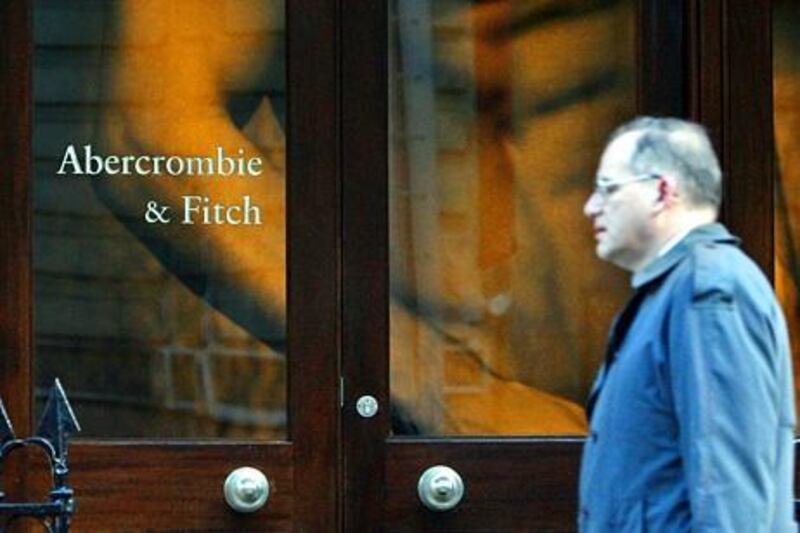This Christmas, while British retail executives consider how their country's most successful retailer failed to crack the United States market, the tills will be ringing at some of America's best exports to London.
Tesco is just the latest in a long line of British retailers who have failed to succeed in the US.
This month, the United Kingdom's supermarket behemoth announced it had appointed advisers to review its Fresh & Easy business in California, Arizona and Nevada. After sinking £1.5 billion (Dh8.89bn) and five years of management time in the US, it looks like the British retailer has reached the end of the road in America.
Before them, Marks & Spencer, Sainsbury's, Dixons, HMV and WH Smith, have all had to beat a retreat.
The irony is, that while British brands have struggled to make a success of the States, there is practically a queue of US retailers at Heathrow airport, all heading for London's premier shopping streets.
Lingerie label Victoria's Secret opened a flagship store on London's Bond Street in August and clothing brand J Crew, favoured by Michelle Obama, is expected to open in the former Burberry store on Regent Street towards the end of next year.
The biggest bridal retailer in the US, David's Bridal, is seeking to open in the UK, following on the heels of Tory Burch, the US fashion group and Theory, another contemporary clothing brand.
In the youth market Abercrombie & Fitch has wowed the teens, while brands such as American Eagle, Forever 21, Hollister and Urban Outfitters have all rolled out branches around the UK, with greater or lesser success.
James Ebel, an agent that specialises in retail property, began working with US retailers more than a decade ago, when he was retained by Gap. He has been instrumental in bringing a string of names, including Forever 21, Juicy Couture and Urban Outfitters, to Britain's shores.
"When US retailers want to crack Europe, they always start with London. The advantage over mainland Europe is that it feels the closest to a US retailer. We speak the same language and have a similar market place," he says.
He senses a slight cooling-off in the US appetite for London since the Olympics, perhaps because of the persistent economic problems in the euro zone. However, the approach US retailers take to the UK is also changing.
Ten years ago, retailers like Gap would take stores in major British cities then begin filling the gaps in between. Now retailers want only a handful of big stores in the largest city centres or malls. Their internet strategy will reach customers in smaller cities and towns.
"Instead of covering the top 50 UK retail pitches, look at the top 50 pitches in Europe," Mr Ebel says.
Rahul Sharma, the retail analyst at Neev Capital, says one reason fashion and luxury US brands do well in the UK is that they are "aspirational".
"British brands don't capture the imagination the way that Victoria's Secrets or Abercrombie & Fitch, or even Gap 10 years ago, do.
"They are selling the American lifestyle and these brands get a huge boost and global exposure from MTV and Hollywood teen films," Mr Sharma says.
Also, the arriving US businesses tend to major on London, which, because of the tourist trade, has attributes more in common with New York or another global city than any other British city.
London may be a more mature market than some of the fastest-growing Brics economies - but it is also less risky a springboard, for an American brand, for that reason. It is worth noting that rents on London's premier streets are still half those - at just over US$1,000 (Dh3,673) per square foot - of those on New York's fifth avenue, according to Cushman & Wakefield's Main Streets across the World report.
The success of London - recession notwithstanding - is accelerating, as retailers begin to favour fewer, larger and more amazing stores. It is an ethos that chimes exactly with what US retailers - well used to filling large spaces - are looking for.
So what went wrong for Tesco in California? Despite all their research, it made some elementary mistakes.
"Creating brand awareness was their biggest problem. Even though they had a decent offer, no one knew what Fresh & Easy meant or who it was for," Mr Sharma says.
Things were harder because they had no local partners and too many British people involved.
Local commentators say their stores were in-between a convenience store and a supermarket; they were fitted out minimally, but the food was aspirationally priced; they went into down-at-heel neighbourhoods by mistake and bamboozled the customers with self-service checkouts - unheard of in the US - no bag packers and ready-made convenience foods.
"The problem with the US is that it has always been horribly, horribly competitive," says Nick Bubb, another independent retail analyst.
"If you go overseas, you have to take a leading position.
"[Tesco] got so much wrong. Other people warned them that there was no gap in the market, but they pushed ahead with it any way," he adds.
But Mr Bubb, despite the long list of British retailers who have foundered in the US, is not so certain American brands have the answer here.
"There are plenty of US retailers who come to the UK and think they can clean up but they fall flat. Just look at Best Buy, or Wal-Mart or Whole Foods," he says.
Selling the American dream through overpriced teen clothing or luxury brands is one thing but when you are trying to make the numbers add up in some of the most competitive markets - grocery or consumer electronics - the American dream of US quality and customer service can sometimes turn out to be just that.
A dream.





